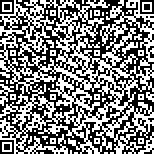| 摘要: |
| [摘要] 目的 对老年人胆道结石并胆道感染分型标准及手术时机与手术方式的选择进行探讨。方法 对2010-01~2012-12在广西壮族自治区人民医院住院的106例老年人胆道结石并胆道感染患者按作者自拟的分型标准进行分组及选择手术方式和手术时机。轻症胆道感染(A组)71例,先兆型急性重症胆道感染(B组)24例,确诊型急性重症胆道感染(C组)11例。三组在性别、年龄、结石分布类型及伴随疾病方面差异无统计学意义。手术方式分为胆道引流术及取石术,胆道引流术包括内镜鼻胆管引流术(ENBD)、经皮经肝胆道引流术(PTBD)及腹腔镜或开腹胆总管切开T管引流术;取石术包括胆总管切开取石术及内镜十二指肠乳头括约肌切开(EST)取石术。对三组的术后住ICU天数、术后住院天数、总住院天数、术中出血量、术后并发症发生率、胆道结石残留率及病死率进行比较。结果 在术后ICU住院天数、术后住院天数、总住院天数三组比较差异有明显的统计学意义(P<0.01),术后胆道残石率三组比较差异亦有统计学意义(P<0.05)。三组术后均无死亡病例;术中出血量及术后并发症发生率三组比较差异无统计学意义(P>0.05)。结论 将老年人胆道结石并胆道感染分为轻症胆道感染、先兆型急性重症胆道感染、确诊型急性重症胆道感染三型,并以此为依据选择合适的手术时机及手术方式,有助于提高老年人胆道结石并胆道感染的治疗效果。 |
| 关键词: 老年人 胆道感染 分型标准 手术方式 手术时机 |
| DOI:10.3969/j.issn.1674-3806.2015.09.01 |
| 分类号:R 657.4 |
| 基金项目:广西医疗卫生重点科研课题(编号:重2010044) |
|
| The classification criteria of biliary calculi with infection of biliary tract and choice of the operation mode and operation timing for elderly patients |
|
SU Zhi, LIU Tian-qi
|
|
Department of Hepatobiliary Surgery, the People′s Hospital of Guangxi Zhuang Autonomous Region, Nanning 530021, China
|
| Abstract: |
| [Abstract] Objective To study the classification criteria of biliary calculi with infection of biliary tract and choice of the operation mode and operation timing for the elderly patients.Methods 106 cases of elderly patients who were suffered from biliary calculi and biliary tract infections and treated in the People′s Hospital of Guangxi Zhuang Autonomous Region from January 2010 to December 2012, were divided into 3 groups according to our prvious classification criteria:mild acute biliary tract infection in 71 cases(group A), moderately acute severe biliary tract infection in 24 cases(group B), acute severe biliary tract infection in 11 cases(group C). There were no statistical differences among the three groups in gender, age, types of stones and the complicated diseases. The operation mode was biliary drainage and biliary lithotomy. Biliary drainage included ENBD, PTCD and common bile duct T-tube. Biliary lithotomy included common bile duct lithotomy bay Laparoscopic or open operation and EST.Results There were significant differences among the three groups in the length of ICU stay, postoperative hospitalization days and total hospitalization days(P<0.01),and in the residual stone rate(P<0.05). No dead cases were found in the three groups after the operation. The amount of intraoperative bleeding and postoperative complication rate were not significantly different among the three groups(P>0.05).Conclusion Our classification criteria of biliary calculi in elderly patients with biliary tract infection are helpful for the choice of operation mode and operation timing for the patients and can improve the elderly patients′ clinical efficacy of biliary calculi with biliary tract infections. |
| Key words: The elderly Biliary calculi with infection Classification criteria Surgical methods Operation timing |

